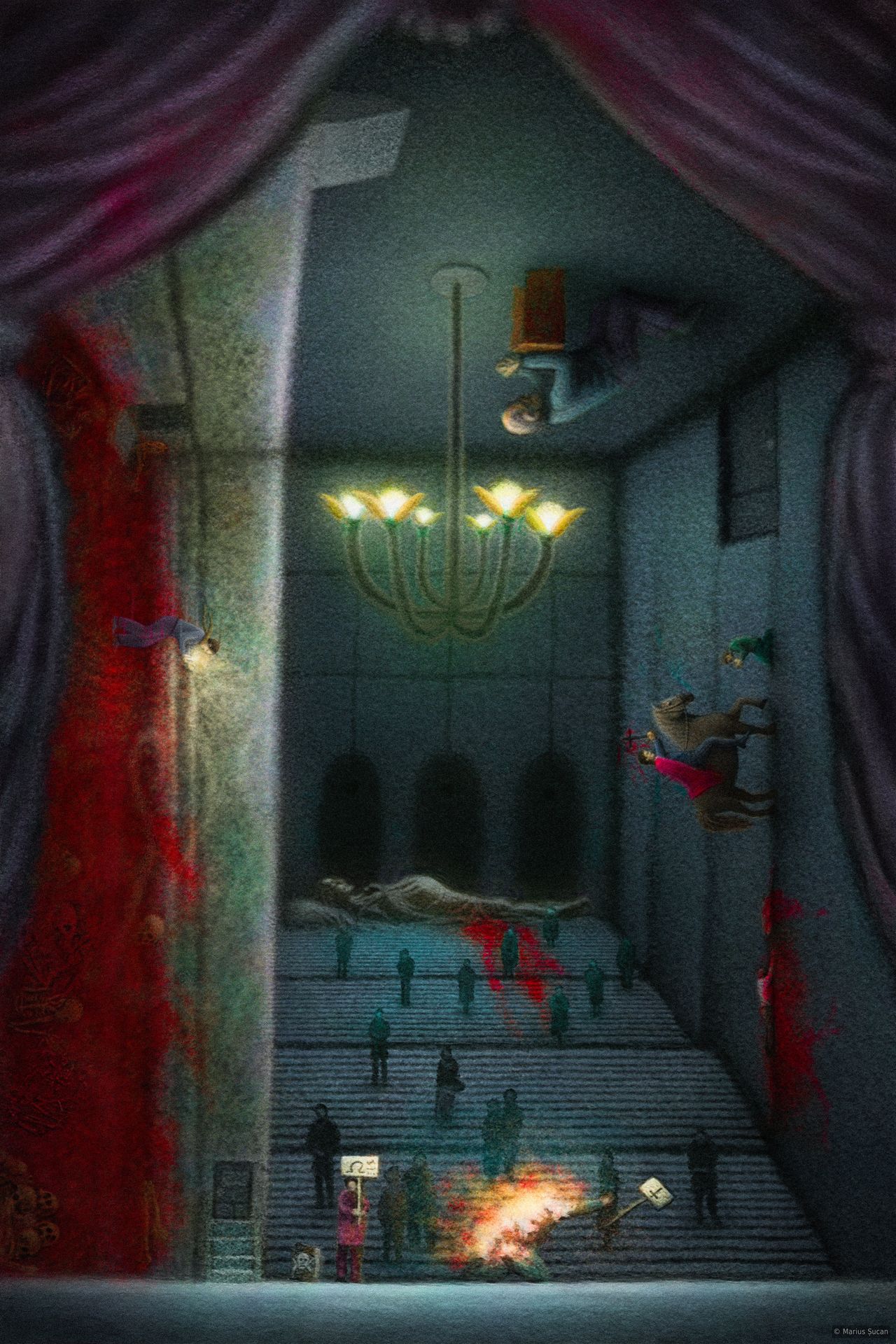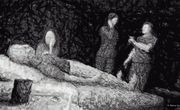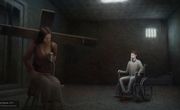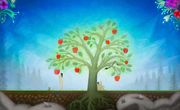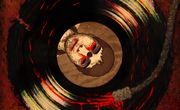A question of faith
Created .
For this image I was inspired by the movie named Nostalghia [1983] by Andrei Tarkovsky. The film raises issues concerning faith, madness and other existential aspects of human life. I decided to make an image that captures the essence of this movie. As such, the image brings into discussion about the same existential issues found in the movie.
I also decided to have a daring image composition. Unintentionally, I managed to create a composition that reminds of the elaborate and intricate compositions of some of the artworks made by Maurits Cornelis Escher. When I realized this composition, I had in mind to express insanity. To make something that can be interpreted based on how you look at it, based on how the image is oriented. An individual can find something crazy while another one finds it normal, as with the composition of the image, it all depends on the perspective you have. For each side of the image, you can see a different scene. These scenes are interconnected. They share a common theme (faith) and there are elements that connect them: doors, steps and a ramp.
The title of this work, "A question of faith", directly suggests that it is about faith. I illustrated four different ways in which faith can be expressed.
At the theater: the madmen protest
In the foreground, I painted shutter curtains and a floor that make-up a theater stage. I try to remind viewers about the philosophical concept according to which life is like a theatre, where each of us have multiple roles in a large play. On the stage there are two protesters. One holds a banner with the last letter of the Greek alphabet, Omega, in eschatology it symbolizes the end of the world. The second man has set fire to himself. There is a similar scene in the movie, as well. He was holding a banner too. On it we can see an inverted cross. This gives the viewers a clue about the subject of their dramatic protest: it could be against Christianity, or a protest aimed to warn people that humanity is heading in the wrong direction, that we become too secular. We can also see in the background of the protesters, three rows of large steps populated with people. They are witnessing the tragic event like passive spectators in a theatre, they are detached and do not care about what is happening. The scene is also found at the end of the movie. On the same steps, people attended the speech of a madman, about existential matters and faith. In the end, he sets himself on fire and no one seems to care.
Up on the stairs of ignorance, I reproduced a scene from the movie where, at some point, we can see a pregnant woman in a dramatic light setup. But in this case, I painted leaking blood on the steps, suggesting the death of the fetus, because of a very strong hemorrhage. I decided to include this element mainly to close the cycle of human existence: birth - death. Yet, the baby is not born and he dies before birth. So, one could say there is already a very strong focus on death in this image.
The Crusade: shut up, the priest will cut your tongue off!
Behind the scene of the theatre, you can see a construction that resembles a giant room where the large rows of steps are integrated in its structure. The camera perspective is noticeably forced in order to include the different scenes. The second scene is found on the right wall of the chamber. The main character in this scene is a horse rider, dressed in a red robe. He holds a cross with his hand triumphantly raised, but this can also be perceived as a threat. A kneeling child is praying to be spared in front of the horseman. Behind the horse we can see a man lying in a blood pool, presumably dead. This scene is meant to highlight the dark past of Christianity, the Crusades, sometimes called the Holy Wars. During these wars many people died from an excess of religious fanaticism and other interests. Faith was misunderstood and put in practice using violence and cruelty.
To paint the horse rider and the horse, I was inspired by a scene from the movie this work is based on. The madman held his speech on a statue of a man on a horse holding a cross above, a chevalier.
In some parts of Romania, elders had a saying: "shut up, will cut your tongue off" (in Romanian: taci! că-ți taie popa limba!). This saying was used for small children when they were saying something silly or wrong. Apparently, in some areas of Romania, people were forced to change their faith and this was one of the ways how it was done.
The neon God
„And the people bowed and prayed
To the neon God they made”
(Simon & Garfunkel - „Sound of Silence”)
On the ceiling, there is an old man praying alone at the chandelier. If we turn the picture, the chandelier is a light support. I try to bring into question how people use technology, inappropriate in some cases. You most-likely know that there are electrical figurines of the crucified Jesus and other biblical characters. Such figurines can be inserted into the socket or run on batteries. When you turn it on, they shine brightly and colorfully, because they have LEDs inside. There many commercial variations of this and also other technical religious gadgets.
I painted the chandelier to somewhat resemble with a plant, a blossoming flower. This a far-fetched reminder of ecology and how it is gradually becoming a major concern in society. Some environmentalists hold dearly to their "faith", in a very passionate way, and try their best to convince others about the climate issues.
I painted a door for the room where the old man is praying. In this way I make it clear he is in a small room dedicated for prayer. Moreover, the door can act as a trap for the horseman in the scene of the Crusades.
The struggle of life
In the last scene, on the left side, I painted a pool reminiscent of the thermal waters where some important scenes take place in the movie. In the movie, the madman asks the main character to try to cross the pool while holding a burning candle, while winds are blowing. In my image, the burning candle represents life, a living person. To cross the pool in a strong breeze, is challenging, because the candle can be extinguished easily. Therefore, I point out life consists of many challenges, setbacks and difficulties. Life itself is fragile just like the candle flame, it can be abruptly extinguished. It is a matter of faith to hold tight and strong to live and to face the countless issues arising in a lifetime. On the floor there is blood. I also depicted many skulls to suggest that many people fail in the serious challenges that a lifetime poses. The waving scarf suggests the blowing wind and I also painted other minor visual effects to support this. The end of the pool is not depicted, because nobody knows what is the end like or how and when life ends. To paint this scene I was also inspired by a poem. The Romanian poem "The struggle of life" by George Coșbuc says: "A battle life is, so fight! with love of it, with longing...". In Romanian: „Lupta vieții": „O luptă-i viața; deci te luptă Cu dragoste de ea, cu dor...”.
I used dark colors for the image. The composition is dominated by cold and dark tones with striking accents of red.
The way I worked on this image was a bit special, because I made first it in gray-scale, then I colored it. Different levels of detailing combined with the different rough textures create the impression that the image is an unfinished work.
